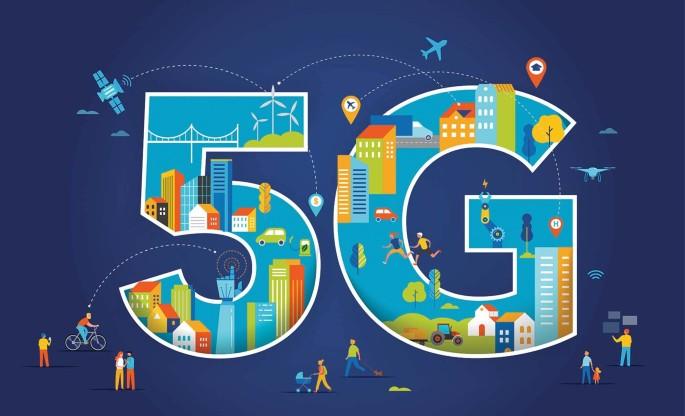How 5G revolutionizes Online Learning: Enhancing Connectivity and Education
The emergence of 5G technology is transforming our digital landscape, unleashing a new era of connectivity that’s reshaping multiple sectors—including education. Online learning has soared in popularity over the past decade, and the advent of 5G networks promises to take e-learning to unprecedented heights. This comprehensive guide explores how 5G revolutionizes online learning,boosts connectivity,and enables educational innovation,while also offering practical tips and real-world case studies.
Understanding 5G and Its Role in Online Learning
5G stands for the fifth generation of mobile network technology.It builds substantially on its predecessor, offering ultra-fast internet speeds, increased data capacity, and low latency—all vital for delivering high-quality digital education experiences.
- Ultra-Low latency: 5G reduces lag time,making live interactions more seamless.
- Gigabit Speeds: Download and upload large files or stream 4K video without interruption.
- Massive Device Connectivity: Supports thousands of devices together, perfect for large virtual classrooms.
- Reliability: Stable connections,even in high-density areas,mean less learning downtime.
Benefits of 5G for Online Education
The advent of 5G in education comes with transformative advantages that address many of the challenges faced by traditional online learning platforms.
Here’s how 5G enhances e-learning:
1. Blazing-Fast and Reliable Connectivity
Buffering videos and dropped calls are major hurdles for online students. 5G’s unprecedented speed and bandwidth ensure uninterrupted access to e-learning content, real-time collaboration, and cloud-based resources, even in remote or rural areas.
2. Immersive Learning Through AR & VR
Augmented Reality (AR) and Virtual Reality (VR) tools can create engaging, interactive lessons—but they require stable, high-speed data transfer. 5G enables these advanced tools, letting students participate in virtual labs, 3D simulations, and field trips, thereby making education more dynamic.
3.Real-Time Collaboration & Dialog
With 5G, video conferencing, group projects, and remote tutoring become instantaneous and crystal-clear. Low latency empowers students and instructors to interact in real time, simulating an in-person classroom surroundings.
4. Equal Access to Quality Education
Many students struggle with limited connectivity. 5G bridges the digital divide, bringing high-speed internet to underserved communities and enabling equal access to world-class educational materials.
5. Seamless Mobile Learning
The next generation of learners is mobile-first. 5G allows students to access coursework,attend lectures,and submit assignments from their smartphones and tablets without compromise,driving higher engagement and flexibility.
How 5G Enables Next-Level EdTech Innovation
Tech companies and learning platforms are already leveraging 5G to build new tools and experiences:
- Cloud-Based Learning Platforms: Faster, more reliable access to cloud content and software, minimizing the need for expensive hardware.
- Adaptive Learning Systems: AI-powered systems can process more data in real time over 5G, creating personalized learning paths.
- Remote Labs and IoT Integration: Science students can remotely operate equipment and conduct experiments from anywhere, thanks to 5G-enabled Internet of Things (IoT) devices.
Real-World Case Studies: 5G in Action
- South Korea’s 5G Classrooms: Schools in Seoul leverage 5G to support VR-based English lessons, dramatically improving student engagement and language retention.
- united States Remote STEM Education: Rural communities partner with telecoms to use 5G hotspots, allowing students to access advanced science classes and participate in collaborative robotics sessions without leaving home.
- European University Virtual field trips: Leveraging 5G, universities in Germany and the UK offer virtual archaeological digs and live-stream high-definition feeds from labs and museums directly to students’ devices.
First-Hand Experiences: Interviews with Educators and Students
“Switching to a 5G-powered virtual classroom allowed us to implement daily live quizzes, interactive VR lessons, and immediate feedback tools—students started participating more and grades improved within just a semester.”
– Emily Tran, Math Teacher, California
“As a university student in a rural town, 5G gave me access to resources and workshops that just weren’t available before.Suddenly, the digital classroom felt real and connected.”
– marcus Añonuevo, Engineering student
Practical Tips for Leveraging 5G in Online Learning
- Upgrade to 5G-Compatible Devices: Ensure your devices (smartphone, tablet, laptop) support 5G for maximum performance.
- Select 5G-Ready Platforms: Use e-learning tools optimized for high-speed, low-latency connections to unlock advanced features like real-time feedback and AR/VR.
- Encourage Collaboration: Take advantage of seamless group work via collaborative apps and video conferencing to mirror in-person experiences.
- Experiment with Interactive Content: Explore 3D, VR, and gamified tools only possible with stable, fast internet connections.
- monitor connectivity: if you’re an educator, continually survey students’ access and provide alternatives where 5G coverage is not yet available.
potential Challenges and How to Overcome Them
While 5G promises significant enhancements, it’s essential to acknowledge and address potential challenges:
- Coverage Gaps: Not all regions have 5G yet. Hybrid learning solutions and downloadable content can minimize disruptions.
- Security Concerns: With more devices connected, robust cybersecurity practices are essential to safeguard student data.
- Device Accessibility: Ensuring all students have access to 5G-enabled devices may require institutional funding and policy support.
Future Outlook: The Next Chapter in Digital Education
As 5G technology continues to mature, its impact on online education will only grow. From personalized AI tutors and immersive distance labs to global classrooms that transcend borders, the potential of 5G in e-learning is vast and thrilling.
Key Trends to Watch:
- Increased adoption of blended and hybrid classrooms.
- Proliferation of AR/VR content across curricula.
- Greater educational equality through network expansion.
- More data-driven,adaptive personalized learning systems.
Conclusion
The 5G revolution in online learning is more than just faster downloads—it’s about empowering educators to create richer experiences,ensuring students everywhere have equal access to quality education,and unlocking innovations previously out of reach. As 5G continues to expand, its role in enhancing connectivity and education will reshape the way we teach, learn, and grow in our increasingly digital world.
Whether you’re an educator, a student, or an EdTech enthusiast, there’s never been a better time to explore the transformative potential of 5G in online learning. Embrace this evolution and discover how seamless, connected education can change lives.

